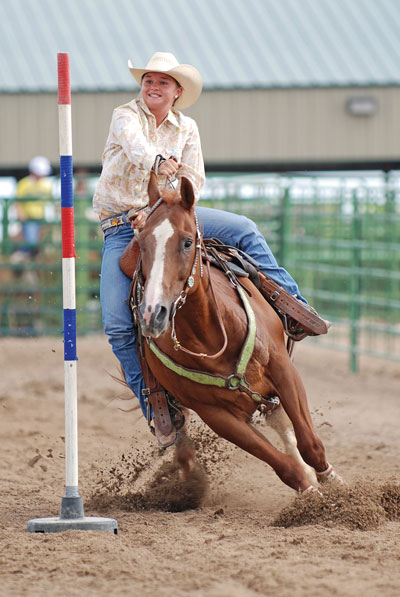
Over a decade ago I was 50 pounds overweight. I was uncomfortable in all of my clothes, much less a fitted pair of riding breeches. When necessary, I found myself frustratingly unable to mount from the ground. Finally, a perfect storm of obstacles resulted in the decision by this equestrian to begin my weight loss journey.
Straight Talk
“The research [on rider weight] isn’t particularly conclusive, nor is there much of it,” says Grey Parks, a lecturer in the Animal Science department at Auburn University. “We all use the 20 percent rule, but that’s based on a cavalry manual from 200 years ago.”
This rule refers to a horse’s supposed ability to safely carry 20 percent of his own body weight on his back, although it has not been scientifically proven. Parks, who has lost and kept off about 65 pounds over the past two years, speculates that the improved balance that typically comes with weight loss affects the horse more than the weight loss itself.

Once you’ve decided to get healthier because of the research or for your own reasons, it’s time to make your plan for moving forward. Though we reached the decision to lose weight differently, Parks and I found similar successful methods of diet and exercise.
“As someone who was teaching exercise physiology and equine nutrition, I started to feel like a hypocrite,” says Parks. “We know how to make horses lose weight: feed them less and ride them more.”
Parks started watching her calorie intake and working out.
Once you’ve decided to get healthier because of the research or for your own reasons, it’s time to make your plan for moving forward.
“Slowly but surely, [the weight] came off,” she says. “When I’m on track and behaving myself, I try to run four to five days per week. On most days, I balance that with light weight lifting and yoga.”
She further enhances her exercise with a diet that includes recommended amounts of protein and fiber.
Recently, Parks found that her regimen allowed her to successfully jog through an in-hand trail course with her yearling filly in about two minutes. Parks has ridden horses most of her life, and she’s currently doing groundwork with her filly and competing in in-hand classes at shows, including trail. Her eventual goal is to participate in ranch riding and possibly dabble in reining and cow horse classes.

Equestrian Weight Loss
Parks took the slow and steady route to getting the weight off.
“I did it the boring way,” she says. “It took me about 18 months. The first year [of weight loss] was pretty steady. The last six months were rough. The smaller you get, the harder it is to lose weight. I still want to lose 10 to 15 more pounds, but it’s not critical at this point.”
In order to accommodate running with her busy schedule, on weekdays Parks gets up at 3 a.m.
“I’ve found that if I don’t work out before I leave the house, it’s not going to happen,” she says. “It’s a very efficient way for me to burn calories compared to the other options I have for exercise.”
She also recommends yoga.
“I was very skeptical about picking up yoga,” Parks adds. “I didn’t understand the value of it until I started doing it. The body awareness and breath control that come with doing yoga have been very useful. It’s also improved my body’s range of motion tremendously.” Yoga also helps her to get her heart rate down following a workout.
Boosting the Benefits
Parks doesn’t consider the work she does with her filly to be part of her exercise routine, but says that it benefits her because it contributes to being active all day every day.
For non-runners, Parks has other recommendations for equestrians with weight loss goals.

“There are some YouTube yoga channels that I enjoy,” she says. “There’s a website called fitnessblender.com that has some fun weight [training] videos. They also have other workouts, but I really like their weight ones, because they keep me focused.”
For those just beginning, she recommends both patience and maintaining reasonable expectations. Denying yourself certain foods can also be detrimental. She feels that by not forgoing specific foods she has both maintained her sanity and stuck to her program.
The end goal has been well worth the effort with improved balance as she works with her filly from the ground now and under saddle in the future.
This article about an equestrian weight loss journey appeared in the April 2020 issue of Horse Illustrated magazine. Click here to subscribe!






